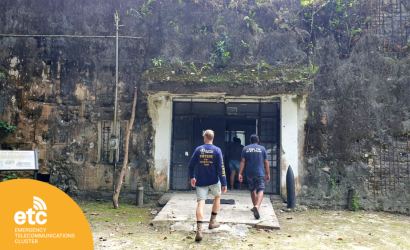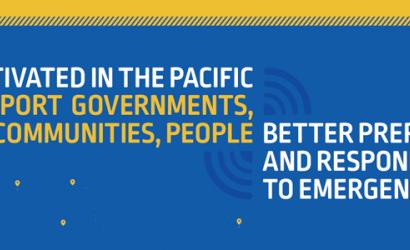Palau
Palau is an island nation in the western Pacific Ocean, forming part of the Micronesian region. As of 2024, its population is estimated at 17,700. The country maintains a close and strategic partnership with the United States of America under the Compact of Free Association, which continues to provide critical financial and technical assistance.
Palau’s economy is primarily driven by tourism and services, although it remains vulnerable to external shocks and climate-related risks. In 2023, the country’s gross domestic product (GDP) was estimated at US$281.8 million. The economy is gradually recovering after a significant contraction during the COVID-19 pandemic, with growth resuming in late 2022 and expected to see strong growth in 2024 and 2025, with projections for 6.8 percent and 8 percent, respectively. Inflation remained moderate at 2.2 percent in 2024. Foreign direct investment continues to play a significant role, accounting for 17 percent of GDP.
The information and communications technology (ICT) sector is increasingly recognized as a key enabler of sustainable development in Palau. Enhanced access to broadband internet has contributed to improvements in healthcare, education, financial inclusion, and public service delivery. Historically reliant on geostationary satellite links, Palau has made significant strides in digital connectivity. The completion of the submarine cable landing station in 2018 and the operationalization of the Palau Cable 2 system have substantially improved internet bandwidth, minimised delays, and lowered costs. These advancements have enabled broader internet usage and enhanced the quality and reliability of digital services.
In times of emergencies, Palau relies on upgraded AM radio systems and HF/VHF radios to relay disaster-related communications, enhancing coordination between emergency responders and ensuring populations receive critical emergency messages. In Palau, the ETC conducted an ICT Capacity Assessment in 2023 and supports capacity strengthening through the participation of Palau in regional workshops and access to online learning resources.
ICT Profile
National Emergency Telecommunications Coordination Lead: Palau National Communications Corporation (PNCC)
National Disaster Management Lead: National Emergency Management Office (NEMO) | Facebook
Ministry of Public Infrastructure and Industries
Bureau of Communications
17,651
The ETC is currently not activated in Palau, but is focused on preparedness efforts within Pacific Island countries through the WFP-led Pacific Emergency Preparedness and Response (EPR) project. In 2023, the ETC carried out an ICT Capacity Assessment and continues to assist with capacity building by enabling Palau's participation in regional workshops and providing access to online learning resources.
Palau is an island nation in the western Pacific Ocean, forming part of the Micronesian region. As of 2024, its population is estimated at approximately 17,695. The country maintains a close and strategic partnership with the United States under the Compact of Free Association, which continues to provide critical financial and technical assistance.
Palau’s economy is primarily driven by tourism and services, although it remains vulnerable to external shocks and climate-related risks. In 2023, the country’s gross domestic product (GDP) was estimated at USD 281.8 million. Economic growth reached 1.9 percent in 2023, supported by a gradual recovery in tourism and public investment. Inflation remained moderate at 2.2 percent in 2024. Foreign direct investment continues to play a significant role, accounting for 17 percent of GDP.
The information and communications technology (ICT) sector is increasingly recognized as a key enabler of sustainable development in Palau. Enhanced access to broadband internet has contributed to improvements in health care, education, financial inclusion, and public service delivery. Historically reliant on geostationary satellite links, Palau has made significant strides in digital connectivity. The completion of the submarine cable landing station in 2018 and the operationalization of the Palau Cable 2 (PC2) system have substantially improved internet bandwidth, reduced latency, and lowered costs. These advancements have enabled broader internet penetration and enhanced the quality and reliability of digital services.
The national emergency telecommunications coordination is led by Palau National Communications Corporation (PNCC), while national disaster management is led by the National Emergency Management Office (NEMO).
United States Dollar (USD)
45.1
135
7.3
90
63.6
98%
Palau National Disaster & Risk Management Framework (PNDRMF) established in 2010 and amended in 2016
-The Palau National Disaster & Risk Management Framework (PNDRMF) provides a structured approach for disaster preparedness, response, recovery, and risk reduction.
Key Components:
Disaster Executive Council (DEC): High-level policy and decision-making body.
National Emergency Committee (NEC): Operational coordination and response.
National Emergency Operations Center (NEOC): Central hub for managing emergencies.
National Emergency Management Office (NEMO): Lead agency for disaster management.
Lead Response Agencies (LRA) and Support Response Agencies (SRA): Assigned based on hazard type.
Hazard Mitigation Subcommittee (HMSC): Focuses on long-term risk reduction.
Policy Highlights:
Preparedness: Includes training, public awareness, emergency communications, and drills.
Response: Structured levels of response, damage assessments (IDA & CDA), and SOPs.
Recovery: Post-disaster review, relief coordination, and reconstruction planning.
Risk Reduction: Integration with development planning, use of technologies, and climate adaptation.
Telecommunications Regulatory Framework – RPPL No. 10-17 (2017)
-Palau’s telecommunications policy is governed by the Telecommunications Regulatory Framework – RPPL No. 10-17 (2017) aimed at ensuring secure, reliable, and inclusive digital connectivity.
Key Provisions:
Creation of the Bureau of Communications as the regulatory authority.
Licensing requirements for telecom operators.
Oversight of spectrum allocation, numbering plans, and interconnection standards.
Promotion of competition and consumer protection.
Alignment with international standards for equipment and service quality.
The Palau National Aviation Administration (PNAA), established in November 2020 is the official body responsible for regulating Unmanned Aircraft Vehicles (UAV) operations in Palau.
-The Palau National Aviation Administration (PNAA), established in November 2020 is the official body responsible for regulating Unmanned Aircraft Vehicles (UAV) operations in Palau. Its mandate includes issuing permits, airspace advisories, and safety directives for drone operations.
Drone use is allowed in Palau for recreational, commercial, and government purposes, subject to PNAA regulations.
Key Requirements:
Maximum weight: 55 lbs (25 kg)
Visual Line-of-Sight (VLOS): Required at all times
Maximum altitude: 400 feet AGL
Daylight-only operations (or civil twilight with anti-collision lights)
Minimum visibility: 3 miles (5 km)
No flying over people, stadiums, or emergency response areas
No flying under the influence or carrying hazardous materials
Preflight inspection required
Report incidents to PNAA within 10 days if injury or damage exceeds $500


